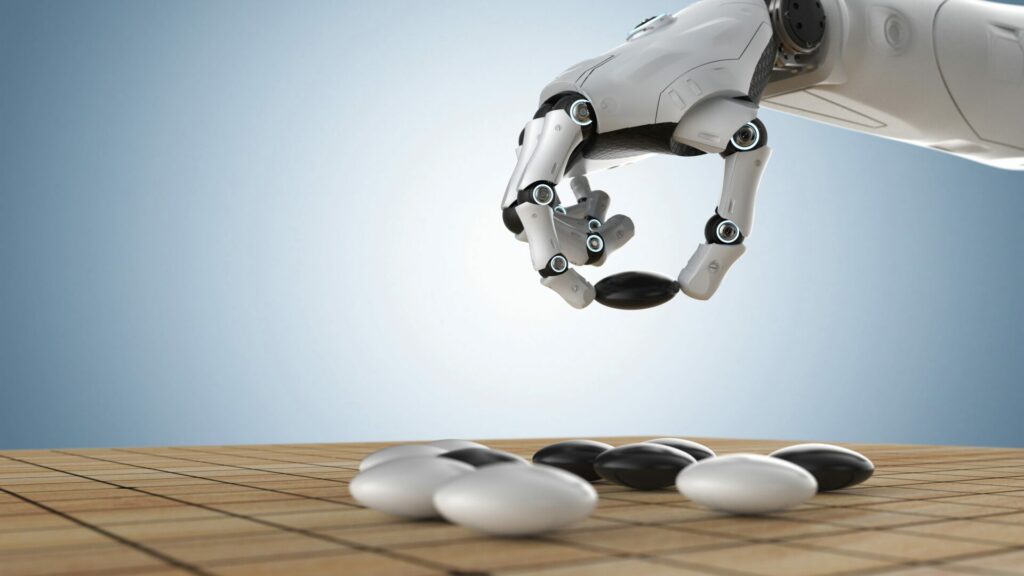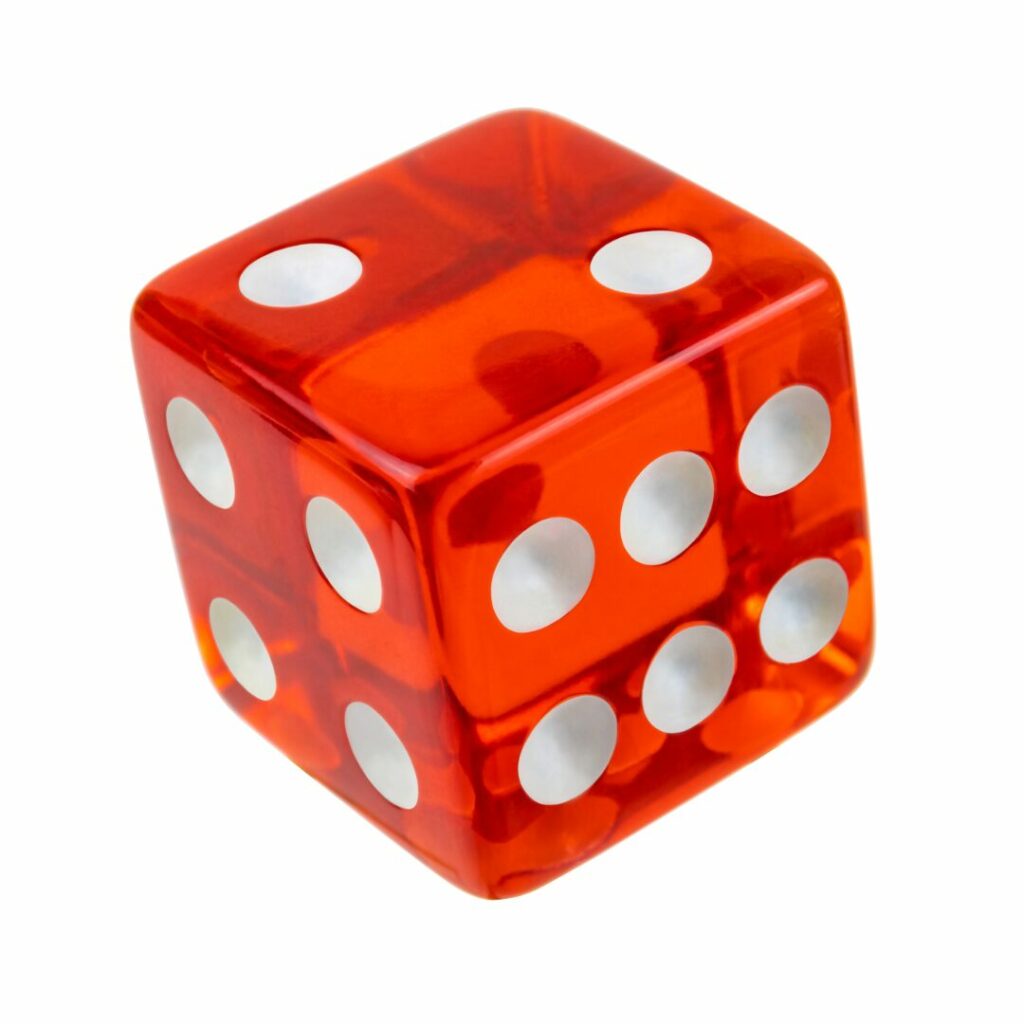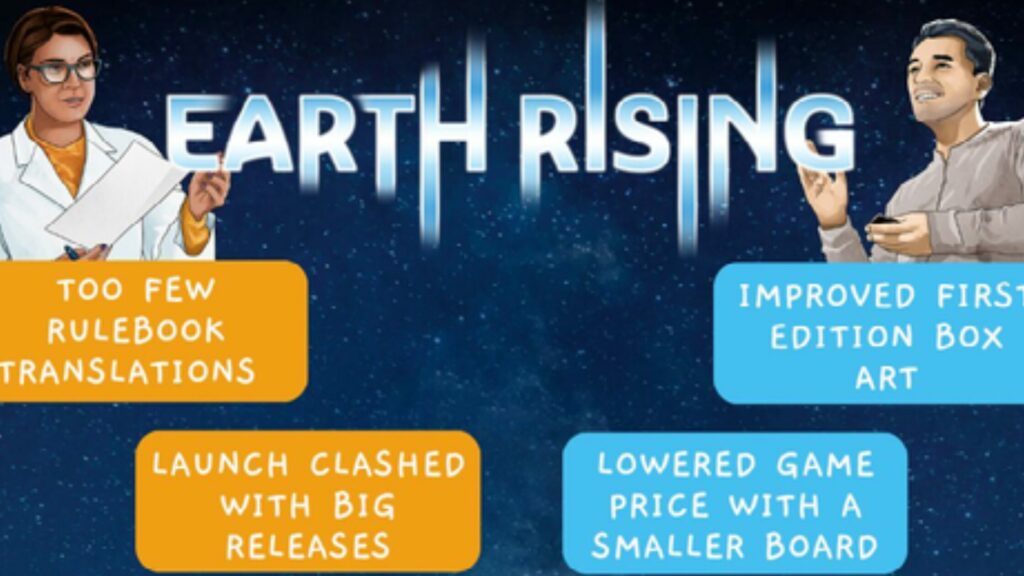
For this post, I wanted to bring together a group of designers to talk about their perspective on AI and its use in games design. You’ll see below that the positions all vary, each bringing nuance to a complicated and controversial debate.
Huge thank you to the wonderful, thoughtful contributors – make sure to check them out. And if you liked this post and want to read more find the subscribe link at the bottom of the page!
Ready to read? I have a suggestion about how to read the article, there are 6 perspectives numbered 1-6 below. Grab a D6 roll, and then read whichever you rolled by clicking the link. Then jump back to the start and roll again!

Roll 1 – The price we pay using AI software
Roll 2 – AI is Everywhere
Roll 3 – AI art work as a final product
Roll 4 – How AI can help game designers understand their game’s stability and balance
Roll 5 – Bolster what you need until you can pay for it
Roll 6 – We should pay artists, but I can’t afford to pay artists: using AI art as a stop-gap
The price we pay using AI software
Falk | Somnus | @somnus_game
For my game Somnus, I won’t use any AI generated pictures, because to me these softwares are created with unethical and exploitative methods. No artist was asked if it is okay to use their work to create this software, but AI companies make a lot of money with their work now without compensating anyone. A famous linguist, Noam Chomsky, called AI ‘plagiarism software’ and he thinks that: ‘It’s the largest theft of property ever since Native American lands by European settlers.’
But the issues are much more than this. AI companies will not just stop creating software for picture generation but will use their new technology in many other fields. Supporting AI software by using it, allows them to keep working on it and invading every other space we can think of, which will have a disruptive effect on a lot of our living spaces. AI software will help big corporations in collecting and analysing our data even more. For example, with the help of AI Facebook is able to analyse millions of data points per second, and they will not only use it to predict but also to shape our future. This is called behavioural modification. A good book to read about this is Shoshanna Zuboff’s: The Age of Surveillance Capitalism. Even further goes Nick Bostrom in his book Superintelligence, which he already wrote in 2014 and in which he describes an existential risk for humanity concerning the development of AI. Interestingly enough, many big name people who work on AI, like Bill Gates and Elon Musk, agreed with Nick Bostrom and his warnings.
We live in a crucial time, nothing is decided yet. We regulated unethical and dangerous technologies like cloning before. If AI technologies become the new standard, then nobody will be safe, everything will be scraped.
Head back to the top and roll again!
AI is Everywhere
Harry Mustoe-Playfair | Ikibiko Games | Physicist, Painter, Professional Photographer, Programmer, Textile Printer | Quaeleon’s Quest
While an extra finger in an AI-generated artwork may seem trivial, it highlights a broader issue: the delicate balance between AI’s potential and unintended consequences. Detecting AI’s impact in other domains isn’t straightforward. Consider advertising campaigns on Facebook—AI optimises them efficiently yet displaces professionals. Google Translate transformed language translation but sidelined human translators. Grammarly catches errors, but nuanced editing remains irreplaceable.
These tools have all been trained on diverse content, largely without the authors’ knowledge, to create tools that work 90% as well as the real deal, often at a tiny fraction of the cost.
Forming opinions about AI involves navigating double standards. Does it make sense to boycott AI image generation, but then use AI powered translation tools? Just as “Photoshopped” evolved from a negative term to a creative tool, AI will become the new normal. Creative professionals will adapt, embracing AI as an ally rather than a threat. In time, we’ll view AI tools as we do Google Translate or Grammarly—integral to our daily work.
Head back to the top and roll again!
AI art work as a final product
Leon | @questinyboardgame | Questinyboardgame.com
To jump right into this, personally it’s a massive no from me. The ethics of how this tech has been created and used so far (in this aspect) is awful and personally I feel like using AI to create ‘art’ removes the heart and soul of a lot of the creative process, which is also often directly reflected in the end result. When you know what to look for, AI ‘art’ still has a very distinctive look and feel to it, and even something that looks pretty good, never really gifts you the opportunity to appreciate the journey that went into it. To me, the magic of art and design is all about the intricate details and decisions that you can see someone had to pour themselves into, it’s that that creates the story behind that journey, and to me that is just as interesting as the art that is produced.
Don’t get me wrong, going the traditional route takes a lot longer, it’s more expensive and there can be so many problems to solve along the way, so I can see why people see those practical benefits of using AI ( especially as a stop-gap / placeholder). But to me it’s that collaborative process (and often even that struggle) to breathe life into something, that ultimately creates something truly unique, fascinating and entirely enchanted with the magic of creativity.
I was deeply inspired by fantasy as a child, and grew up with Brian Froud’s influences with the Labyrinth and the Dark Crystal. His illustrations and my general appreciation for practical effects (especially in 80s fantasy movies) always made me come back to traditional art and design. So I knew from the very beginning of my journey with Questiny, that that was exactly the kind of direction that I wanted to honour and I’m proud to work with and support other human creators. To think that thousands of artists and creatives all over the world ( just like Brian Froud) have had their very souls and entire legacies of work scraped, pillaged and plundered without their consent, just so someone can make something quicker and cheaper feels so wrong to me. Just because we *can* take the quick and easy route, it doesn’t always mean that we *should*, especially when other artists’ livelihoods and legacies are at stake. Working with and supporting other creative humans *feels* good! As that collaborative, creative process cultivates deeper relationships, helps us to learn and grow, keeps us inspired and in turn passes on that inspiration to those around us.
Let’s keep making and sharing magic, whilst we still can.
Head back to the top and roll again!
How AI can help game designers understand their game’s stability and balance
Mike | Huff No More | @huffnomore
When designing my first game ‘Sakana Stack’, I had an interesting opportunity to have an AI simulation of the game created. The game development coincided with my nephew’s final year degree in Computer Science with AI. He had already created AI bots to play Poker and Chess, but having the opportunity with a new and largely untested game to build a simulation to test rule strength and understand strategy was a really interesting challenge to form his final year dissertation. After around 10,000 plays by AI bots of varying capability, the great news was that my rulebook didn’t break – success! There was also some really interesting strategy established from the Monte Carlo Simulation bot which showed winning behaviours and best game strategy.
So while there is rightly fierce debate on the impact AI artwork is having and will have on creatives, I think there can be some real positives for game designers in respect of using AI to test the strength of their game structure. Being able to demonstrate the strength of your rulebook, especially very complex games with many combinations, could be a huge positive to show potential publishers. It could also show breaks in the rules after many thousands of playthroughs which a designer can then fix, something that would take a huge amount of time to achieve through traditional playtesting. Another real benefit could be to show balance. Games with multiple paths to victory based on player choices can be tested many times to ensure certain actions and paths are not overpowered, along with showing the ability to catch-up when players find themselves behind. All positive attributes to many games that build a level of fairness.
Of course, this approach does not take away from the need to rigorously playtest your game with real people. This is where the real magic happens on the design journey, seeing your game mechanics come to life with a group of people that are having a lot of fun playing your game. But having the confidence of the rules strength and balance of your game following AI simulation testing could really help designers get further ahead with their design much more efficiently.
Head back to the top and roll again!
Bolster what you need until you can pay for it
Michael | KUGO | @kugo.game
I’m not and can’t comment on the overall ethics of AI, or its potential harm to society. Whether you’re for AI or against it, the fact is it’s here! And as long as it provides short term convenience to people, it will stay.
From the perspective of those building businesses from scratch, you’re often alone, wearing many hats and juggling many tasks. In these scenarios, AI can be a huge help. It won’t be better than human experience. But it can offer support and resources that would otherwise require an experienced team or a large budget.
All the artwork, gameplay, graphics, website etc for KUGO is designed and created by me with no support from AI. However I have used it to help me craft titles to posts, or provide different options for paragraphs.
Personally, I don’t think that AI will ever replace human creativity. But if you choose to use it, it can fill a gap and support you in areas where your skills aren’t strong enough. Freeing up valuable time for you to focus on creativity.
Head back to the top and roll again!
We should pay artists, but I can’t afford to pay artists: using AI art as a stop-gap
Joe | What If Games | @joe_plays_games
All the current artwork for ‘Drop Zone Chocks Away’ is AI generated. I’d like to explain why, how I’ve done it and my goal.
There’s a dilemma that I’m holding whilst developing my game: I believe in supporting artists to produce art and I don’t have the funds needed to pay such an artist. So what do I do? How do I create something that people will crowdfund when so much of success is down to the perception and look of a game? I simply can’t fund that work myself, so I do it by using AI generated art, specifically with a subscription to Adobe Firefly. It’s simple to use, cheap, and for the style that I want, it produces good enough results.
But that’s not what I want. I want all the artwork across every element of my game to be created by an actual human. That’s where the crowdfunder comes in, the art will be priced into the campaign. This comes with risks to the success of the project; I’ll need enough backers to fund the artwork and the production or else it doesn’t get made. But that’s a risk worth taking.


